Pond Stocking Fish Advice in Kansas- 9 Quick Tips For Mind-Blowing Fishing In Any Size Fish pond!
Do you dream of angling 7-pound largemouth from your pond?
And just how old is a trophy bass? That depends on your pond ecosystem. Pond stocking fish have an intimate relationship to the lands and creek beds that immediately surround a pond. By developing a bowl-shaped pond deeper than 10 feet, with aerators and wetland plants to protect the environment from runoff and fishkills, a honey hole pond can grow 7-lb bass in 7 to 10 years.
Living Waters Aquariums & Ponds uses the following techniques to develop honey holes and we fix pond stocking problems. If you have a farm pond as small as 1/4 acre, you can apply these 9 guide-lines to create a sustainable angler’s fishery.
#1 Provide Fish With Underwater Structures
Consider this: when bass hunt by ambushing they conserve energy to grow. To create hiding, hunting and grazing structures for fish, you can weigh-down and submerge Western red cedars and Christmas trees. These will last for 3-5 years. Large logs may provide structure for 15 or more years. However, good fishing ponds need more variety than logs. A used tire with a cedar tree in the center of it provides a multi-use artificial shelter, and groups of tires can be bolted into a pyramid for a long-lasting fish attractor. Crates are another choice. Living Waters combines blocks and pipes to create snag-less fish attractors.
#2 Make It Easy For Forage Fish and Sport Fish To Spawn
If you live in Kansas, the bottom of your pond is probably “mud”. But bass do not produce big spawns on mud. For healthier bass fry, we recommend you add large shallow bowls and piles of pea gravel to the flat pond bottom. In large ponds, flathead catfish may spawn on the underside of logs or pallets. Depending on the size and ecology of your impoundment, you may sustain these three forage fishes- gizzard shad, golden shiners, and mosquito-fish. The spawns of the latter two prefer vegetated shallows or mats of algae. By pond stocking forage fish, you will bulk up fingerling bass.
#3 Level-up Your Pond: Unlock The Unused Half
It may sound unbelievable, but if your pond is more than 8 feet deep, the bottom half of your pond certainly does not contain animal life during the growing season. You can verify this when you swim in the pond and feel cold water at your feet. Experts agree that aeration is the single most important step in maintaining a healthy pond. Consider a windmill. Pond Aeration will increase water clarity and decrease the need for additional pond stocking.
#4 Let Nature Power-feed Your Fish
Insects are a great source of protein and favored by bass, bluegill and crappie. And no plant lures as many insects as our native buttonbush. This attractive shrub produces long-lasting flowers attracting butterflies, hummingbirds, honeybees, and songbirds. Therefore we recommend planting buttonbush at the water’s edge. This nitrogen-fixing plant will bring you as much luck as a shamrock (we grow those in Kansas ponds too). The bush’s fibrous roots can additionally provide erosion control and cover for fry, fingerlings and bream. The branches of the buttonbush shade the banks; then gusty Kansas winds shake the branches and drop insects in the water. As a result, buttonbush are attractors of predator fish.
#5 Reduce Mosquitoes Naturally
Mosquitoes love water. But dragonflies also love water. And dragonflies love to eat mosquitoes all evening. But where do dragonflies come from?
Dragonfly larvae grow in shallow water. They hunt water bugs and mosquito larvae. Have you ever visited a Kansas lowland or pond that was filled with hundreds of humming dragonflies? Here is the reason: Black-Eyed Susan and several other perennial flowers are known dragonfly attractors.
Another native, the mosquito-fish (Gambusia), is attracted to shallow waters with horsetail rush. This hardy guppy finds mosquito wrigglers to be irresistible! One pound of mosquito-fish will consume up to 1.5 lbs of mosquito larvae each day!
#6 Out-compete The Weeds
Think twice before adding cattails. Cattails are healthful, but may spread quickly and reduce diversity. Remove all cattails, canary grass and common treed especially if your pond is shallow. You want plants that will not tangle your lure unless you cast onto the shore. Therefore, fill your shorelines and embankments 10′ out with native grass and wildflowers. The EPA calls this 10 foot strip around the pond a “Buffer Zone.” Buffer zone plants should grow tall in the summer to out-compete the water weeds.
#7 Provide Frog Habitats
Most importantly, frogs make for irresistible meals to trophy bass. Trophy bass ignore minnows to hunt for larger prey. For bass, a frog is a relatively easy meal to catch. A golf ball-sized frog provides several days’ nutrition for an 18-inch largemouth bass. But also consider other benefits to encouraging frog habitation. Toads and bullfrogs consume mostly insects- including flies, hornets and wasps. Amphibians (such as frogs) play another ecological role. Amphibians have sensitive skin. This causes them to easily absorb toxins from their environment. Therefore, sightings of spring peeper, chorus, leopard, pickerel and wood frogs are indicators of healthy pond ecology. A minimum 6-ft buffer zone around your pond will provide your frogs shelter from predators such as foxes.
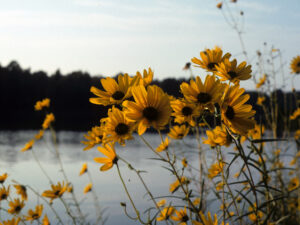
#8 Use Wildflower Water Filters
In tip #6, we introduced the “Buffer Zone”. Above, wildflowers & native grasses prevent your sod from sliding into the pond, while filtering water below. And taller plants have deeper roots, and remain green throughout the summer. They filter storm-water and absorb nutrients. Guided by the principals we teach, Living Waters is designing and producing the best Midwest pond environments as Wet-Land-Scapes. We encourage you to achieve good environmental results by growing your own perennials among embankments and riprap.
#9 Consult Living Waters Aquariums & Ponds to Beautify Your Pond and Improve Fishing
We hope that you are already familiar with some of the tips we have discussed. If you have ideas or questions about your pond environment, please call us. We give you straight answers about algae blooms, pond stocking, weed control, turtle populations, grass carp, bullhead catfish, crayfish, and more. We do not stock ponds, so for pond stocking guides, please contact a local fisheries manager.

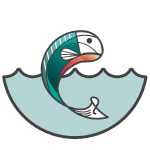
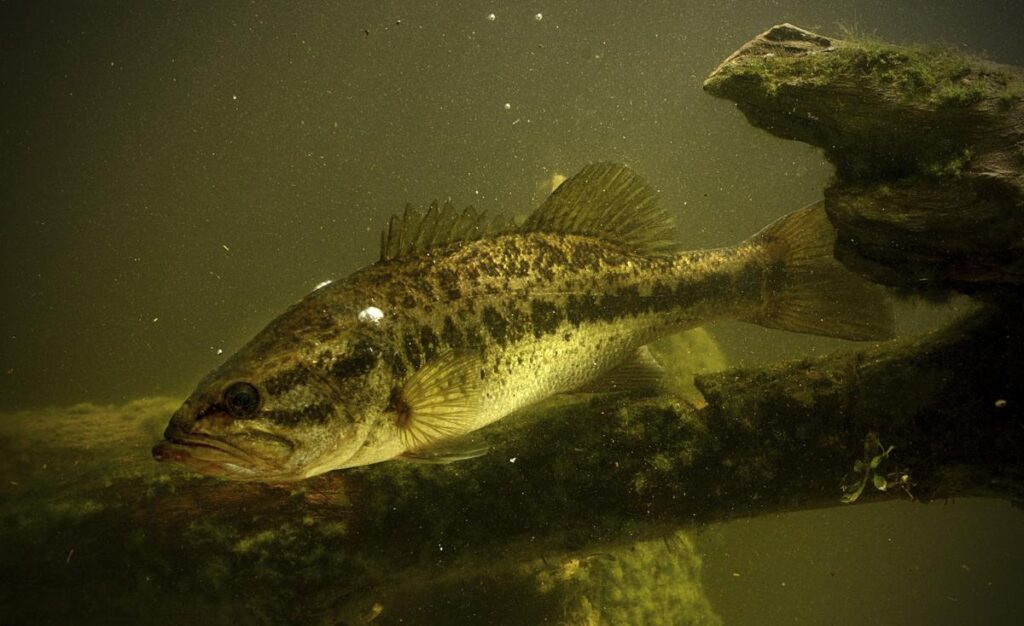

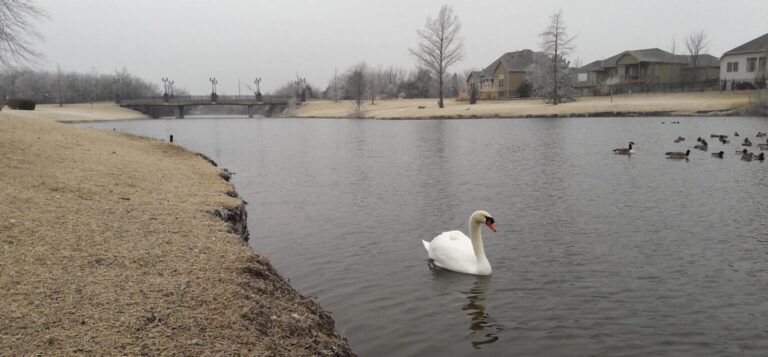
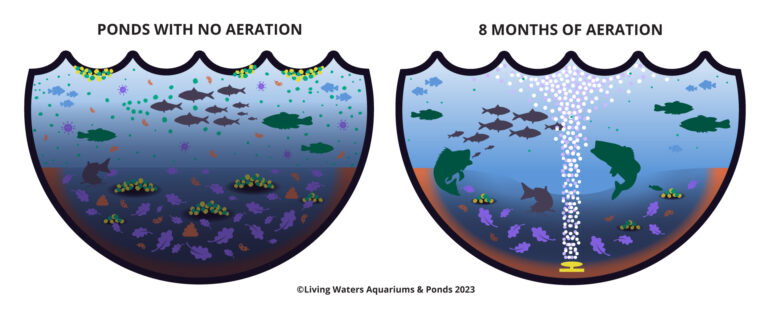
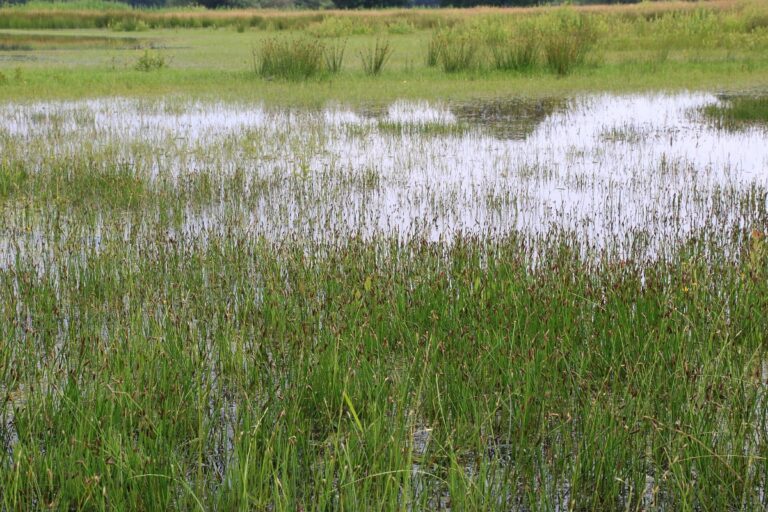

I am trying to make over a old pond, started putting aldaecide on massive flimentous mats of algae,going to use beneficial bacteria to treat the entire pond, going to add fish to it,wish I knew what was in it. I found this article to be high informative. More information would be welcomed.
Thanks for sharing some of your experience Dave. As a fellow fisherman, I understand your frustration of filamentous algae mats! Finding an algaecide that works for you is an important milestone. And the old pond may be somewhere that you already enjoy spending time, so why not double down your efforts? If your pond is over 5 foot deep, then adding diffused aeration will help you achieve steady long-term improvements in fish and pond health (: This integrated approach may save you time, and if your pond is remote, an aerating windmill would be a charming landmark. As far as what’s in it? Bass and bluegill are a sustainable choice. In the Midwest, crappie or green sunfish can overtake and stunt in small ponds.